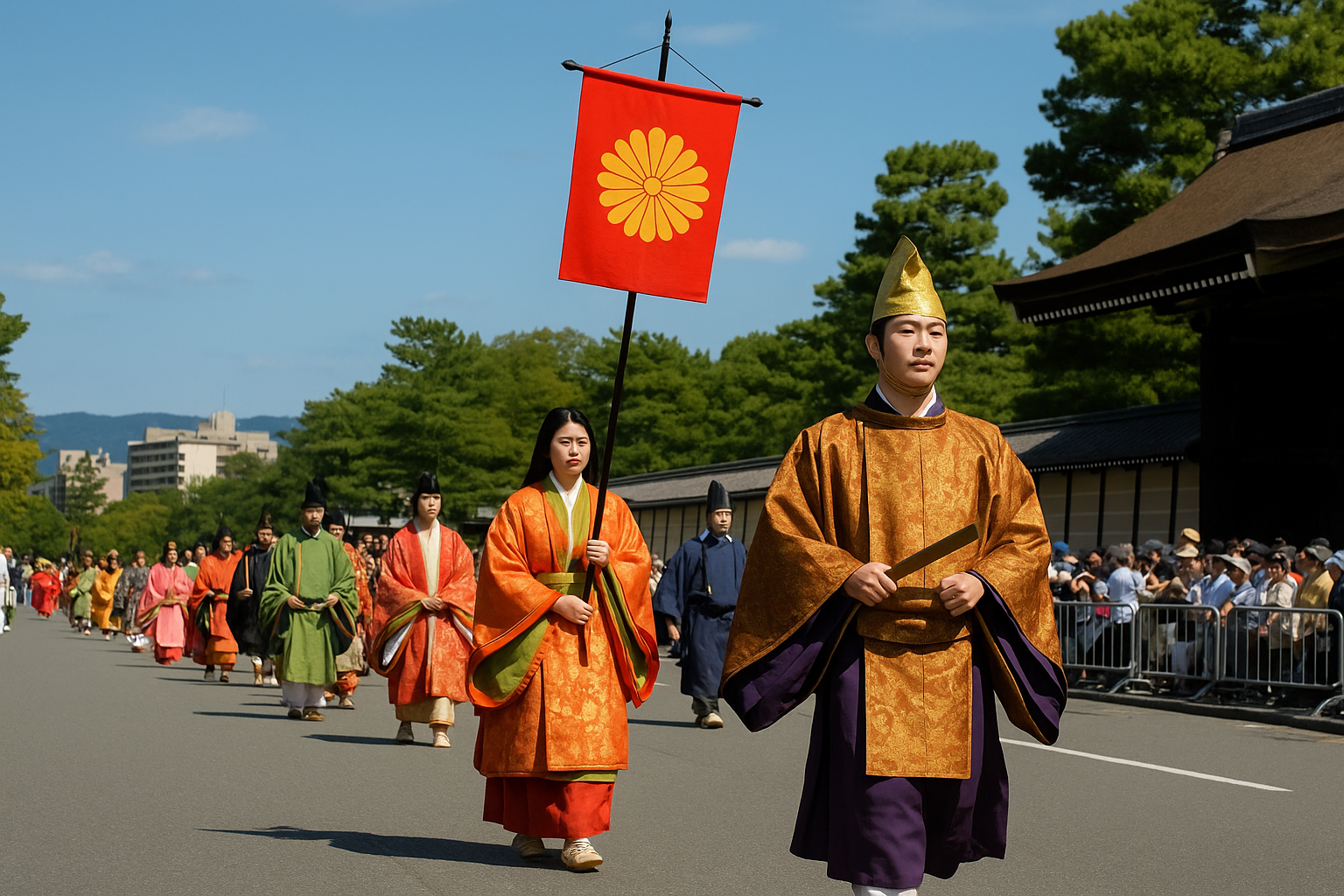What Are Kyoto’s Three Great Festivals?
Kyoto is home to three major traditional festivals known as the “Three Great Festivals of Kyoto”: the Gion Matsuri, Aoi Matsuri, and Jidai Matsuri.
Each one reflects a unique aspect of Kyoto’s culture, history, and spirituality.
- Gion Matsuri (July): One of Japan’s three biggest festivals. Enormous, ornate floats parade through downtown Kyoto, filling the summer streets with energy and color.
- Aoi Matsuri (May): A graceful procession of participants dressed in elegant Heian-era court attire, marching from the Kyoto Imperial Palace to Shimogamo and Kamigamo Shrines.
- Jidai Matsuri (October): A grand historical parade that recreates Japan’s history period by period, traveling from the Imperial Palace to Heian Shrine — a must-see for history lovers.
This article focuses on the upcoming Jidai Matsuri, held on October 22, 2025.
Overview of the Jidai Matsuri
- Date: October 22 (annually)
- Origin: First held in 1895 to commemorate the 1,100th anniversary of Kyoto’s founding (the relocation of Japan’s capital to Heian-kyo).
- What Makes It Unique: Around 2,000 participants parade from the Kyoto Imperial Palace to Heian Shrine, portraying Japan’s evolution from ancient to modern times.
Each group represents a distinct era, which is why it’s called the “Festival of the Ages.” - Parade Length: Approximately 2 km long, lasting about 2 hours — turning central Kyoto into a living historical stage.
Highlights You Won’t Want to Miss
-
Incredible Historical Accuracy
The costumes, weapons, and props used in the parade are faithfully reproduced from historical records.
Every detail, from armor to fabric patterns, is based on authentic research — it feels like watching Japanese history come to life right before your eyes. -
A Journey Through Time
The parade flows chronologically through Japan’s major eras — from the Heian and Kamakura periods to the Sengoku (Warring States), Edo, and Meiji eras.
You might spot figures resembling Oda Nobunaga, Sakamoto Ryoma, or other famous samurai and historical icons.
Even among the same periods, subtle differences in costume and culture make for fascinating comparisons. -
The Grand Finale at Heian Shrine
The parade concludes dramatically at Heian Shrine, where participants march beneath the massive red torii gate.
The combination of traditional costumes and shrine architecture creates a breathtaking scene — perfect for photos.
Access Information
-
Starting Point (Kyoto Imperial Palace)
- Subway Karasuma Line: 5-minute walk from Marutamachi Station (Exit 1) or Imadegawa Station (Exit 3)
- For viewing along the route, near Marutamachi Station Exits 3–4 is especially recommended.
-
Goal (Heian Shrine)
- Subway Tozai Line: 10-minute walk from Higashiyama Station (Exit 1)
Viewing Tips
- The parade travels from the Imperial Palace through central Kyoto to Heian Shrine.
You can watch for free along the sidewalks, but the best spots fill up early — arrive in advance if you want a clear view. - For photography, look for locations with classic Kyoto scenery or the iconic red torii gate of Heian Shrine in the background.
- To avoid crowds and enjoy a comfortable experience, consider reserved seating near the Imperial Palace or Heian Shrine.
Tickets are available in advance and are easy for international travelers to purchase online.
Final Thoughts
The Jidai Matsuri offers a rare chance to experience Japan’s history come to life — right in the streets of Kyoto.
While the Gion Matsuri dazzles with grandeur and the Aoi Matsuri enchants with elegance, the Jidai Matsuri stands out for its educational and immersive journey through time.
October is a lovely season for Japan travel — right before the autumn foliage begins — making it a perfect time to visit Kyoto.
If you love history, traditional culture, or simply want a deeper connection to Japan’s past, don’t miss this unforgettable festival that brings Kyoto’s heritage to life.
Plan your trip, pack your camera, and experience one of the most unique things to do in Japan — the Jidai Matsuri!
